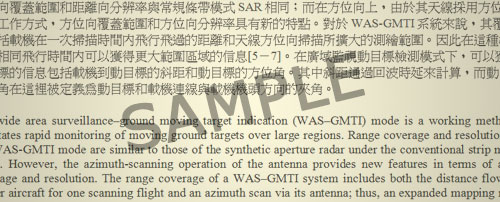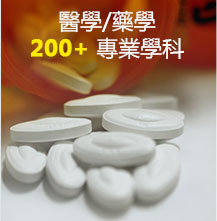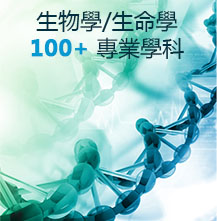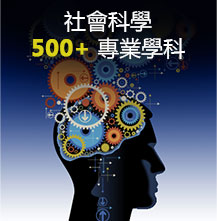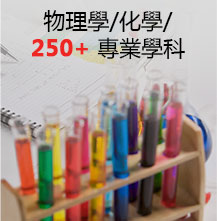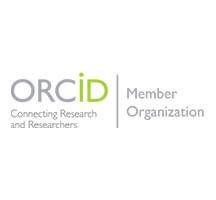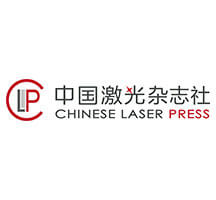意得輯精選醫學翻譯論文、法律翻譯論文和物理翻譯論文,四階段嚴謹翻譯流程,協助您的論文摘要、期刊論文、學術論文和其他稿件能完整轉換語言。
 先提交您的摘要、論文或研究文章,說明您的具體要求。基於學科領域,我們將論文發給相關領域的翻譯人員。
先提交您的摘要、論文或研究文章,說明您的具體要求。基於學科領域,我們將論文發給相關領域的翻譯人員。
據WHO資料統計,心肌梗塞患者40-60%在起病後1小時內死亡,其主要原因是發病初期救治不當,使病情惡化。急救人員要有較強的急救意識,平時注意加強專業知識學習,熟悉急性心肌梗塞的發病特點及急救規範;熟悉搶救藥品的作用、使用方法、劑量及不良反應;熟練掌握搶救儀器如:心電圖機、心電監護儀、喉鏡、氣管插管等的性能、操作及相關知識;熟練掌握心肺復蘇術等急救技術;平時要多就行急救模擬訓練,加強醫護合作的熟練默契程度。
 翻譯人員將中文論文稿件翻譯成英文,他們擅長技術用語、學科用語的轉換。
翻譯人員將中文論文稿件翻譯成英文,他們擅長技術用語、學科用語的轉換。
According to statistics by the World Health Organization, 40 – 50% of AMI patients die within 1 hour of disease onset, mainly because of inappropriate medical treatments during the early stages of disease onset, which results in exacerbating the patient's condition. Emergency medical aid personnel should strengthen their awareness in first aid and expand their professional knowledge. They should be familiar with the onset characteristics and first aid procedures for AMI, as well as the effects, administration methods, dosage and negative side effects of emergency drugs. Furthermore, they should be proficient in the use of emergency medical equipment, such as ECG machines, ECG monitors, laryngoscopes, endotracheal tubes, and so on, while understanding the function, operation and other aspects relating to these equipment. In addition, they should be required to master first aid techniques, such as cardiopulmonary resuscitation (CPR), and to undergo regular first aid simulation training in order to increase the level of cooperation and proficiency within the healthcare team.
 中英雙語專家檢查翻譯的準確性,確保精準傳達作者翻譯稿件的真正含義。
中英雙語專家檢查翻譯的準確性,確保精準傳達作者翻譯稿件的真正含義。
According to statistics byof the World Health Organization, 40 – 5060% of AMI patients diedied within 1one hour of disease onset, mainly because of inappropriate medical treatments duringat the early stages of disease onset, which results in exacerbating the patient's condition of patients. Emergency medical aid personnel should strengthen their awareness in first aid and expand their professional knowledge. They should be familiar with the onset characteristics and first aid procedures for AMI, as well as the effects, administration methods, dosage and negative side effects of emergency drugs. Furthermore, they should; furthermore, they should be proficient in the use mastering functions, operation procedures and related knowledge of emergency medical equipment equipments , such as ECG machines, ECG monitors, laryngoscopes, endotracheal tubes, and so on, while understanding the function, operation and other aspects relating to these equipment. In ; in addition, they should be required to masterproficient in first aid techniques, such as cardiopulmonary resuscitation (CPR), and to undergo regular first aid simulation training in order to increase the level of cooperation and proficiency within the healthcare team.
 經驗豐富的學科編修翻譯檢查標點、語法、語言風格、格式、流暢性。
經驗豐富的學科編修翻譯檢查標點、語法、語言風格、格式、流暢性。
According to statistics of the World Health Organization, 40–60% of AMI patients died within one hour1 h of disease onset, mainly because of inappropriate medical treatments at the early stages of disease onset,in exacerbating which exacerbated condition of the patients. Emergency medical aid personnel should strengthen their awareness inof first aid and expand their professional knowledge. They should be familiar with the onset characteristics of and first aid procedures for AMI, as well as be aware of the effects, administration methods, dosage and negative sideadverse effects of emergency drugs. ;furthermoreFurthermore, they should; be proficient in mastering functions,; operation procedures; and related knowledge of emergency medical equipments, such as ECG machines, ECG monitors, laryngoscopes, and endotracheal tubes, and so on,. In addition, they need to be proficient in first aid techniques, such as cardiopulmonary resuscitation (CPR), and undergo regular first aid simulation training in order to increase the level of cooperation proficiency within the healthcare team.
 發送最終翻譯潤色稿前,資深審稿人再次檢查稿件是否滿足您的所有要求。
發送最終翻譯潤色稿前,資深審稿人再次檢查稿件是否滿足您的所有要求。
According to statistics of the World Health Organization, 40–60% of AMI patients died within 1 h of disease onset, mainly because of inappropriate medical treatments at the early stages of disease onset, which exacerbated the condition of the patients. Emergency medical aid personnel should strengthen their awareness of first aid and expand their professional knowledge. They should be familiar with the onset characteristics of and first aid procedures for AMI, as well as the effects, administration methods, dosage and adverse effects of emergency drugs. Furthermore, they should be proficient in mastering functions; operation procedures; and related knowledge of emergency medical equipment, such as ECG machines, ECG monitors, laryngoscopes, and endotracheal tubes. In addition, they need to be proficient in first aid techniques, such as cardiopulmonary resuscitation, and undergo regular first aid simulation training to increase the level of cooperation proficiency within the healthcare team.




